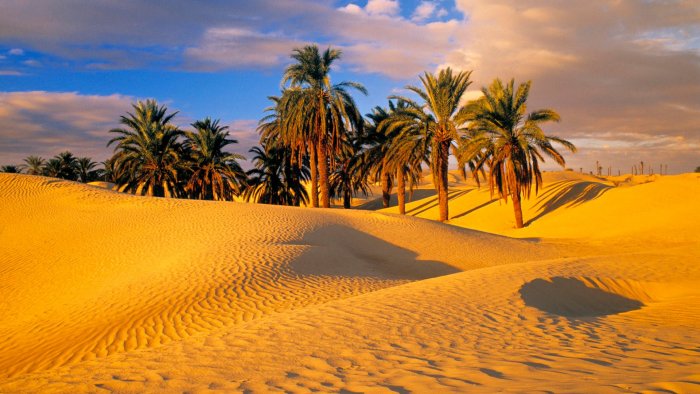MessageToEagle.com – There is today conclusive evidence proving that the desert of Sahara was a fertile grassland some thousand years ago.
However, what still remains unknown, is what turned the green Sahara into a desert. Most researchers agree that about 8,000 to 10,000 years ago, a major climate shift took place. It was caused by a variation in the angle of the tilt of the Earth and the shape of its orbit.
Changes in the Earth’s tilt caused changes in weather patterns and Sahara became a desert.
Archaeologist Dr. David Wright, from Seoul National University has now put forward a controversial theory suggesting that humans turned Sahara into a desert.
By studying archaeological evidence documenting the first appearances of pastoralism across the Saharan region, and comparing this with records showing the spread of scrub vegetation, an indicator of an ecological shift towards desert-like conditions, Dr. Wright has reached the conclusion humans destroyed Sahara’s fertile grassland.
“In East Asia there are long established theories of how Neolithic populations changed the landscape so profoundly that monsoons stopped penetrating so far inland,” Dr. Wright says.
He points out evidence of human-driven ecological and climatic change has been documented in Europe, North America and New Zealand. Wright believed that similar scenarios could also apply to the Sahara.

Dr. Wright says he has been able to confirm that beginning approximately 8,000 years ago in the regions surrounding the Nile River, pastoral communities began to appear and spread westward, in each case at the same time as an increase in scrub vegetation.
See also:
Secrets Of The Lost Ancient Sahara Civilization
What Changed The Green Sahara Into A Desert?
Growing agricultural addiction had a severe effect on the region’s ecology. As more vegetation was removed by the introduction of livestock, it increased the albedo (the amount of sunlight that reflects off the earth’s surface) of the land, which in turn influenced atmospheric conditions sufficiently to reduce monsoon rainfall.
The weakening monsoons caused further desertification and vegetation loss, promoting a feedback loop which eventually spread over the entirety of the modern Sahara.
“There were lakes everywhere in the Sahara at this time, and they will have the records of the changing vegetation. We need to drill down into these former lake beds to get the vegetation records, look at the archaeology, and see what people were doing there. It is very difficult to model the effect of vegetation on climate systems. It is our job as archaeologists and ecologists to go out and get the data, to help to make more sophisticated models,” Dr. Wright says.
Despite taking place several thousands of years ago, the implications of humans being responsible for environmental and climatic degradation are easy to see.
With approximately 15% of the world’s population living in desert regions, Wright stresses the importance of his findings: “the implications for how we change ecological systems have a direct impact on whether humans will be able to survive indefinitely in arid environments.”
Dr. Wright’s theory challenges the challenges the conclusions of previous studies that point to shifts in the world’s weather patterns that abruptly transformed the vegetated region into some of the driest land on Earth.
MessageToEagle.com
Expand for referencesDavid K. Wright. Humans as Agents in the Termination of the African Humid Period. Frontiers in Earth Science, 2017; 5 DOI: 10.3389/feart.2017.00004







